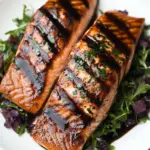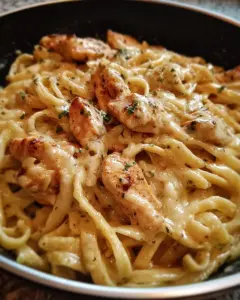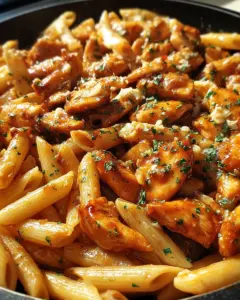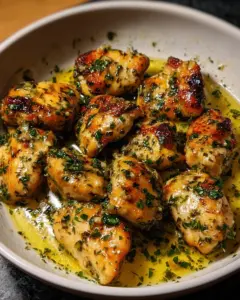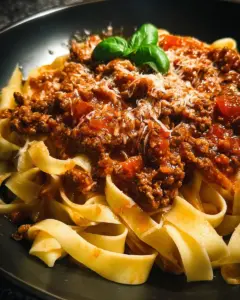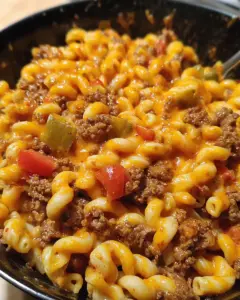This Balsamic Glazed Salmon is a delightful dish that combines simplicity and elegance. The rich, tangy balsamic reduction infused with garlic and rosemary elevates the tender salmon fillets, making it suitable for any occasion—from a quick weeknight dinner to an impressive dinner party main course. With its balance of flavors and ease of preparation, this recipe is sure to become a favorite in your culinary repertoire.
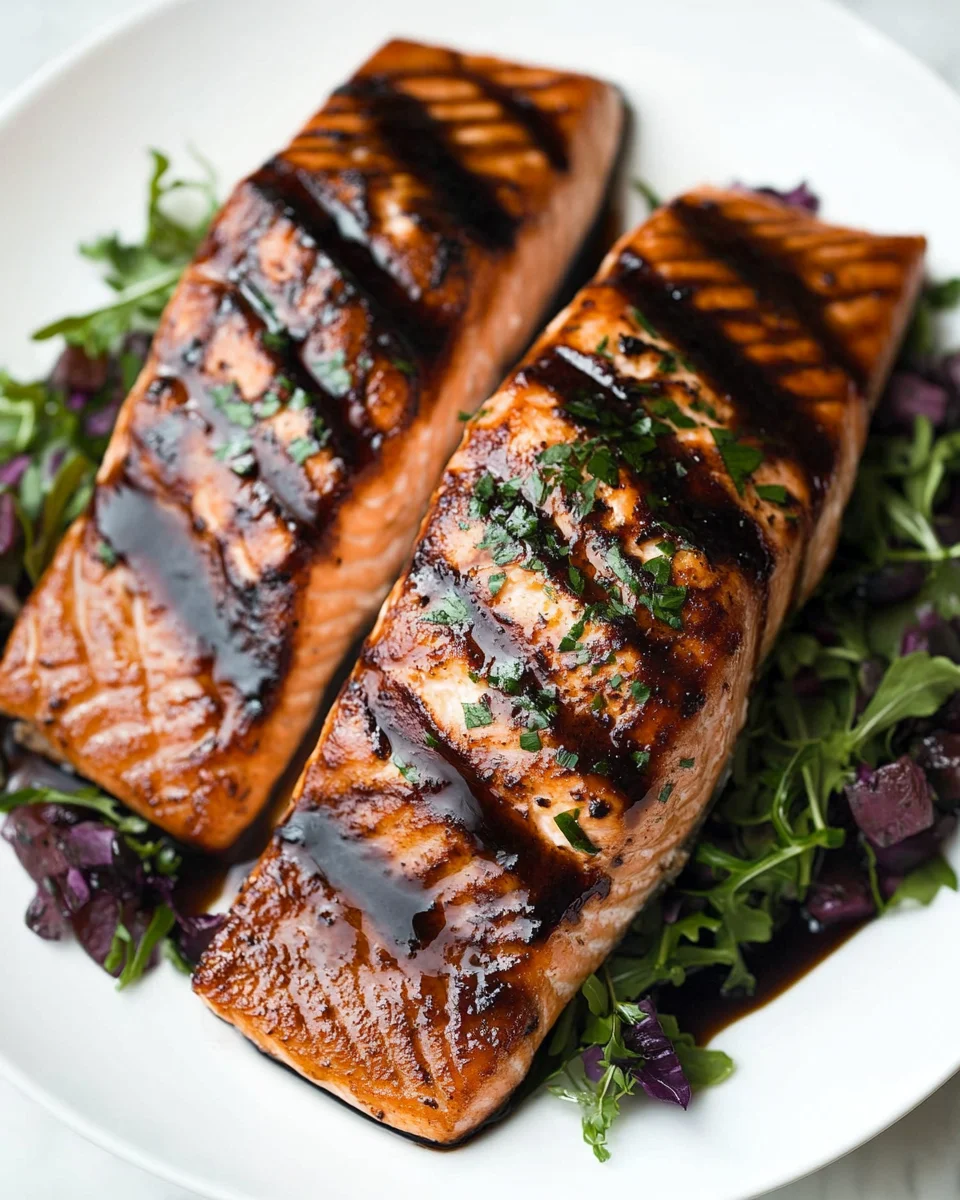
Jump to:
- Why You’ll Love This Recipe
- Tools and Preparation
- Essential Tools and Equipment
- Importance of Each Tool
- Ingredients
- For the Balsamic Rosemary Glaze:
- For the Salmon:
- For Garnish
- How to Make Balsamic Glazed Salmon
- Step 1: Rest the Salmon
- Step 2: Prepare the Balsamic Glaze
- Step 3: Cook the Salmon
- Step 4: Serve
- How to Serve Balsamic Glazed Salmon
- With Fresh Herbs
- On a Bed of Greens
- Accompanied by Citrus
- With Grain or Starch
- How to Perfect Balsamic Glazed Salmon
- Best Side Dishes for Balsamic Glazed Salmon
- Common Mistakes to Avoid
- Refrigerator Storage
- Freezing Balsamic Glazed Salmon
- Reheating Balsamic Glazed Salmon
- Frequently Asked Questions
- Can I use frozen salmon for Balsamic Glazed Salmon?
- What should I serve with Balsamic Glazed Salmon?
- How do I know when the salmon is cooked through?
- What variations can I try with this recipe?
- How long does it take to make Balsamic Glazed Salmon?
- Final Thoughts
- 📖 Recipe Card
Why You’ll Love This Recipe
- Quick and Easy: Perfect for busy nights, this recipe takes just 30 minutes from start to finish.
- Flavorful Glaze: The balsamic reduction brings a unique blend of sweetness and acidity that complements the salmon beautifully.
- Versatile Dish: While it’s fantastic with salmon, the glaze works wonderfully on chicken or roasted vegetables too.
- Elegant Presentation: Drizzled with glaze and garnished with herbs, this dish looks stunning on any table.
- Healthy Meal Option: Packed with nutrients, salmon is a great choice for a wholesome meal.
Tools and Preparation
Having the right tools can make your cooking experience smoother and more enjoyable. Gather these essential items before you start.
Essential Tools and Equipment
Importance of Each Tool
- Non-stick skillet: Ensures even cooking without sticking, making it easier to flip the salmon fillets.
- Medium saucepan: Ideal for preparing the balsamic glaze without splattering.
- Fine mesh strainer: Removes solids from the glaze for a smooth finish.
- Measuring cups and spoons: Ensures accuracy in ingredient quantities for consistent results.
Ingredients
For the Balsamic Rosemary Glaze:
- ½ cup balsamic vinegar
- ¼ cup white wine or low-sodium chicken broth
- 2 tablespoons honey
- 1 tablespoon Dijon mustard
- 1 rosemary sprig (about 7 inches long)
- 1 clove garlic, minced
For the Salmon:
- 4 (6 oz) salmon fillets, skinless or skin-on
- Salt and freshly ground black pepper, to taste
- 2 teaspoons olive oil
For Garnish
- 2 tablespoons fresh parsley, finely chopped
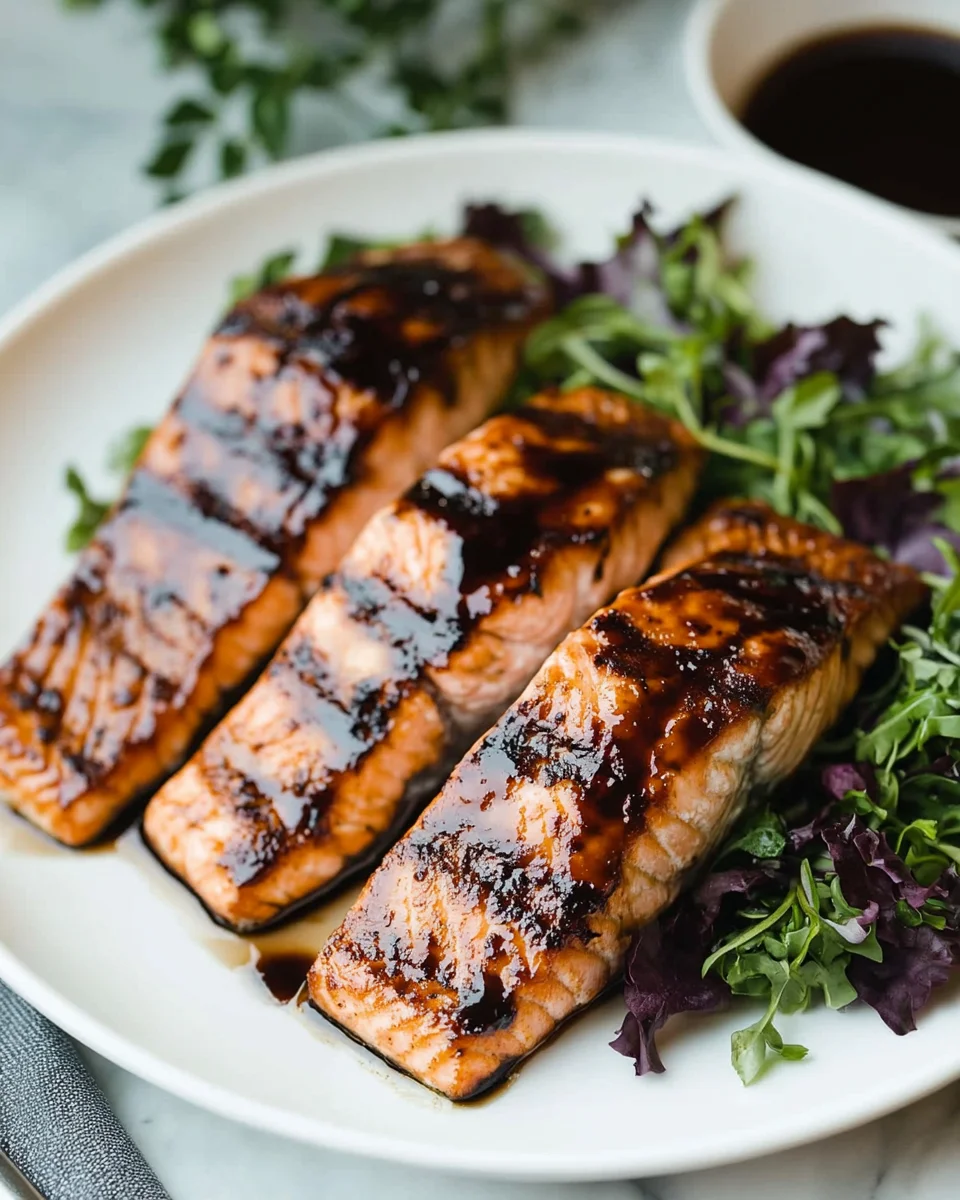
How to Make Balsamic Glazed Salmon
Step 1: Rest the Salmon
Let the salmon rest at room temperature for 10–15 minutes before cooking. This helps it cook more evenly.
Step 2: Prepare the Balsamic Glaze
- In a medium saucepan, combine the balsamic vinegar, white wine (or broth), honey, Dijon mustard, rosemary sprig, and minced garlic.
- Bring the mixture to a boil over medium-high heat.
- Reduce heat to medium-low and let it simmer until thickened and reduced to about ⅓ cup (around 10–15 minutes). Stir occasionally.
- Remove from heat and strain through a fine mesh strainer into a heatproof bowl. Set aside.
Step 3: Cook the Salmon
- Pat the salmon dry with paper towels and season both sides with salt and pepper.
- Heat olive oil in a large non-stick skillet over medium-high heat.
- Add the salmon fillets to the skillet; sear without moving them for 3–4 minutes until nicely browned on one side.
- Carefully flip each fillet using a spatula; cook for another 2–3 minutes or until cooked through and flaking easily with a fork.
Step 4: Serve
Serve the salmon warm, drizzled generously with balsamic glaze. Garnish with finely minced rosemary or parsley if desired. Enjoy!
How to Serve Balsamic Glazed Salmon
Serving Balsamic Glazed Salmon can elevate your meal presentation and enhance the dining experience. Here are some delightful serving suggestions to complement this flavorful dish.
With Fresh Herbs
- Chopped Parsley – Sprinkle fresh parsley over the salmon for a burst of color and freshness.
- Rosemary Sprigs – Add a sprig of rosemary on top for an aromatic touch that pairs well with the glaze.
On a Bed of Greens
- Mixed Greens Salad – Serve the salmon on a bed of mixed greens, drizzled with olive oil and lemon for a refreshing contrast.
- Spinach or Arugula – These greens provide a peppery flavor that complements the sweetness of the glaze.
Accompanied by Citrus
- Lemon Wedges – Offer lemon wedges on the side for guests to squeeze over their salmon, adding brightness to each bite.
- Orange Segments – Include some orange segments to enhance the dish’s sweetness and add a pop of color.
With Grain or Starch
- Quinoa Pilaf – Serve with fluffy quinoa pilaf, which absorbs the balsamic glaze beautifully.
- Garlic Mashed Potatoes – Creamy mashed potatoes make for a comforting side that balances the tangy glaze.
How to Perfect Balsamic Glazed Salmon
Achieving perfectly cooked Balsamic Glazed Salmon is simple with just a few tips in mind. Follow these suggestions for best results.
- Choose Fresh Salmon – Use fresh, high-quality salmon fillets for optimal taste and texture.
- Let It Rest – Allow the salmon to rest at room temperature before cooking. This helps it cook evenly.
- Preheat Your Pan – Ensure your skillet is hot before adding the salmon; this will create a nice sear.
- Avoid Overcrowding – Cook in batches if necessary. Overcrowding can lower the pan temperature and prevent browning.
- Monitor Cooking Time – Keep an eye on cooking time; salmon should flake easily but still remain moist.
- Use a Meat Thermometer – Check doneness with a thermometer; aim for an internal temperature of 145°F (63°C).

Best Side Dishes for Balsamic Glazed Salmon
Pairing sides with your Balsamic Glazed Salmon can enhance your meal’s overall flavor profile. Here are some excellent options to consider.
- Roasted Asparagus – Lightly seasoned asparagus roasted until tender adds elegance and crunch.
- Sautéed Spinach – Quick sautéed spinach with garlic complements the salmon’s bold flavors.
- Couscous Salad – A light couscous salad with cucumbers and tomatoes provides a refreshing contrast.
- Sweet Potato Mash – Creamy sweet potato mash adds sweetness that harmonizes with the balsamic glaze.
- Grilled Zucchini – Grilled zucchini spears add a smoky flavor that pairs nicely with fish.
- Wild Rice Medley – A blend of wild rice offers earthy flavors and texture to balance the dish.
Common Mistakes to Avoid
When preparing Balsamic Glazed Salmon, it’s easy to make a few common mistakes that can affect the dish’s flavor and texture.
- Not letting the salmon rest: Failing to let the salmon sit at room temperature can lead to uneven cooking. Always rest your salmon for 10-15 minutes before cooking.
- Skipping the glaze reduction: If you don’t reduce the glaze properly, it may not have the right consistency or flavor intensity. Allow it to simmer until thickened.
- Overcooking the salmon: Overcooked salmon becomes dry and less enjoyable. Cook until it’s just done and flakes easily with a fork.
- Ignoring seasoning: Neglecting to season the salmon with salt and pepper can result in bland fish. Season generously for better flavor.
- Using low-quality balsamic vinegar: Low-grade vinegar can spoil the dish’s taste. Opt for high-quality balsamic vinegar for the best results.
Refrigerator Storage
- Store Balsamic Glazed Salmon in an airtight container.
- It keeps well in the refrigerator for up to 3 days.
Freezing Balsamic Glazed Salmon
- Place cooled salmon in a freezer-safe container or bag.
- Balsamic Glazed Salmon can be frozen for up to 2 months.
Reheating Balsamic Glazed Salmon
- Oven: Preheat to 350°F (175°C) and reheat for about 10 minutes until warmed through.
- Microwave: Heat on medium power for short intervals, about 30 seconds at a time, checking often.
- Stovetop: Use a skillet on low heat, adding a splash of water or broth to prevent drying out.
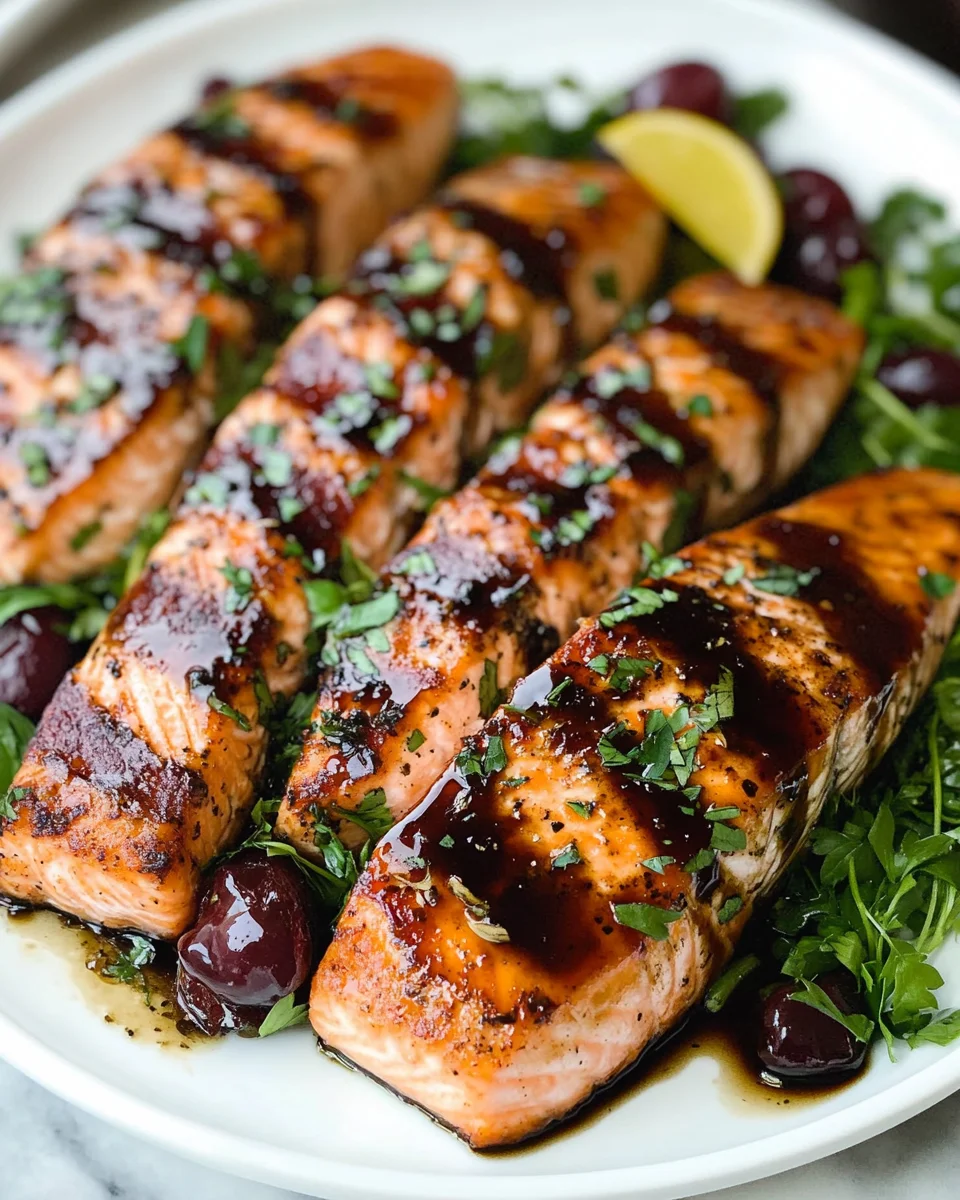
Frequently Asked Questions
Can I use frozen salmon for Balsamic Glazed Salmon?
Yes, you can use frozen salmon. Just ensure it is fully thawed before cooking for even results.
What should I serve with Balsamic Glazed Salmon?
This dish pairs well with steamed vegetables, rice, or a fresh salad for a balanced meal.
How do I know when the salmon is cooked through?
Salmon is done when it flakes easily with a fork and has an internal temperature of 145°F (63°C).
What variations can I try with this recipe?
You can customize your glaze by adding spices like crushed red pepper or substituting thyme for rosemary.
How long does it take to make Balsamic Glazed Salmon?
The total preparation and cooking time is about 30 minutes, making it perfect for quick weeknight dinners.
Final Thoughts
Balsamic Glazed Salmon is not only delicious but also versatile. This recipe offers rich flavors that can elevate any dinner. Feel free to experiment with different herbs or sides to suit your taste. Enjoy this elegant yet easy dish that’s sure to impress!
Did You Enjoy Making This Recipe? Please rate this recipe with ⭐⭐⭐⭐⭐ or leave a comment.
📖 Recipe Card
PrintBalsamic Glazed Salmon
Balsamic Glazed Salmon is a perfect blend of rich flavors and simplicity, making it an ideal choice for both busy weeknights and elegant dinner parties. This dish features tender salmon fillets drizzled with a luscious balsamic reduction infused with garlic and rosemary. With its balance of sweetness and acidity, this recipe transforms a simple meal into a gourmet experience. Ready in just 30 minutes, it’s an easy yet impressive dish that will quickly become a favorite in your culinary repertoire.
- Prep Time: 10 minutes
- Cook Time: 20 minutes
- Total Time: 30 minutes
- Yield: Serves 4
- Category: Main
- Method: Frying
- Cuisine: American
Ingredients
- ½ cup balsamic vinegar
- ¼ cup white wine or low-sodium chicken broth
- 2 tablespoons honey
- 1 tablespoon Dijon mustard
- 4 (6 oz) salmon fillets
- Salt and pepper to taste
- 2 teaspoons olive oil
Instructions
- Let the salmon rest at room temperature for 10–15 minutes.
- In a medium saucepan, combine balsamic vinegar, white wine or broth, honey, Dijon mustard, minced garlic, and rosemary. Bring to boil, then reduce heat and simmer until thickened (10–15 minutes). Strain into a bowl.
- Pat the salmon dry; season with salt and pepper. Heat olive oil in a non-stick skillet over medium-high heat. Sear salmon for 3–4 minutes on one side; flip and cook another 2–3 minutes until cooked through.
- Serve warm with balsamic glaze drizzled on top.
Nutrition
- Serving Size: 1 serving
- Calories: 382
- Sugar: 8g
- Sodium: 225mg
- Fat: 20g
- Saturated Fat: 3g
- Unsaturated Fat: 14g
- Trans Fat: 0g
- Carbohydrates: 11g
- Fiber: 0g
- Protein: 40g
- Cholesterol: 90mg
